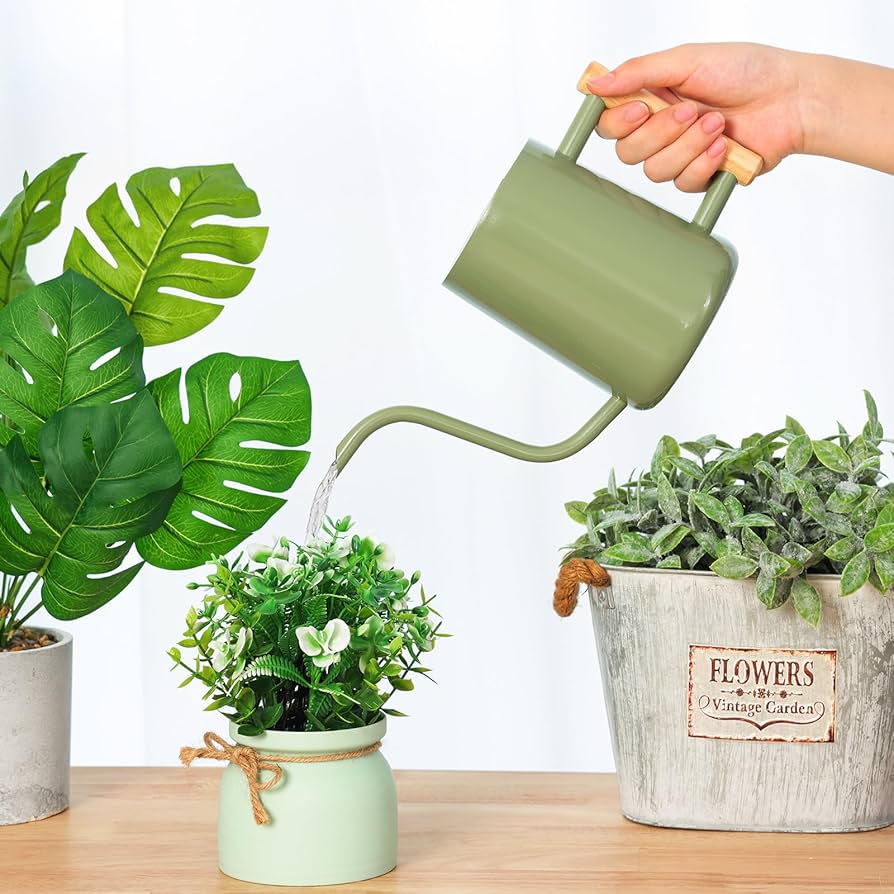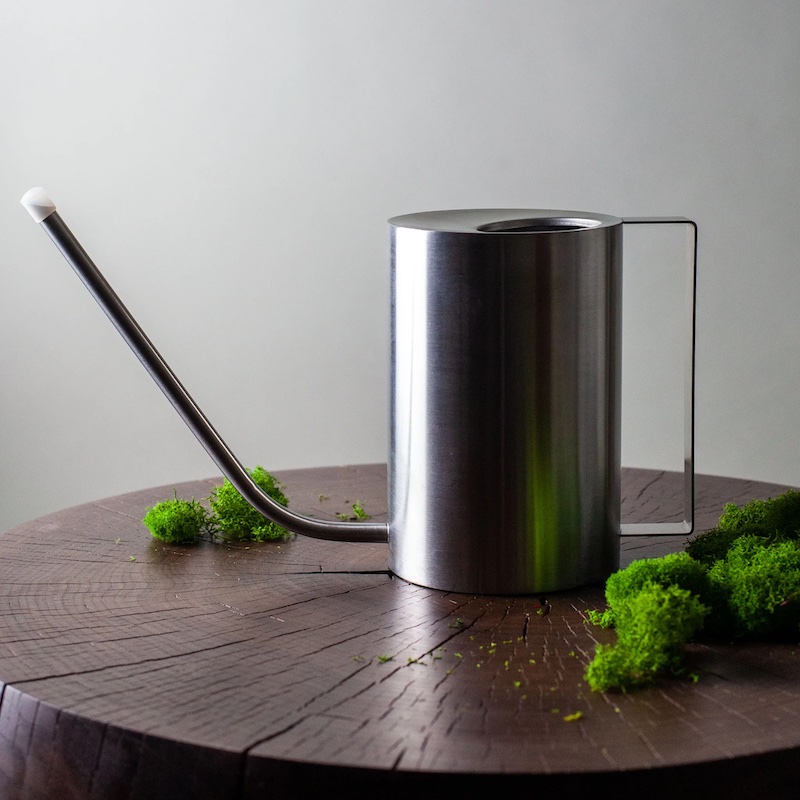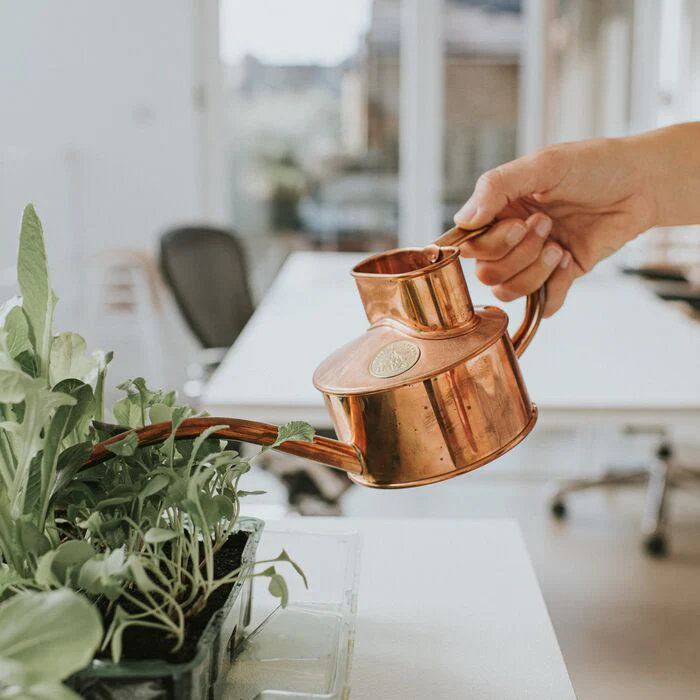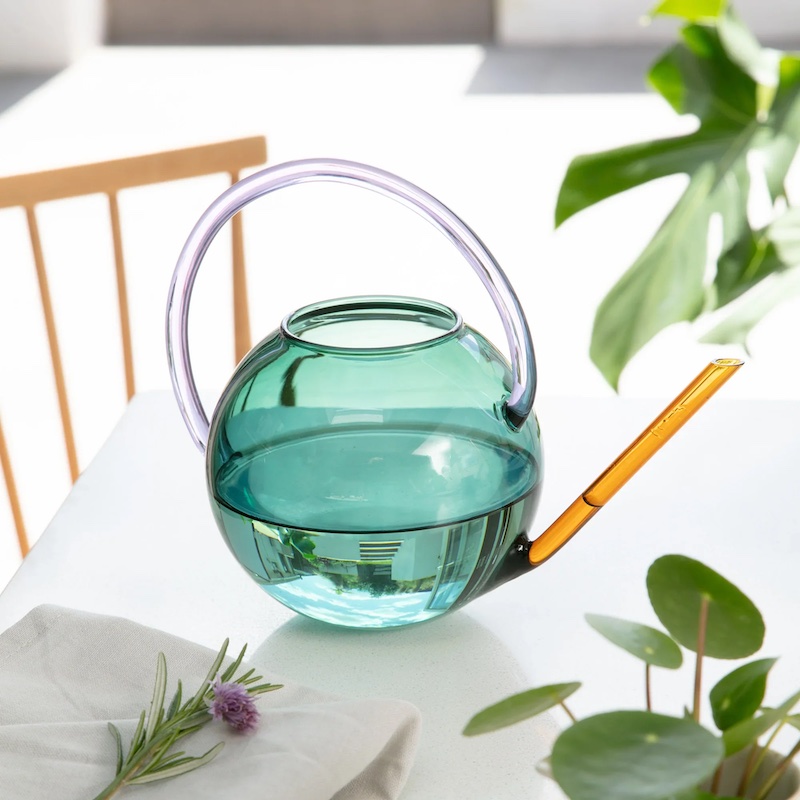
The House Plant Watering Can Designs for Long-living Plants
The Importance of Proper Watering for House Plants
For house plants, proper watering is vital. It ensures they thrive. Each plant’s needs are different. Too much water can lead to root rot. Too little can cause wilting and stunt growth. The right house plant watering can helps prevent these issues. It allows for precision and control. This is important for the health of house plants. Watering needs vary throughout the year. In growing seasons, plants often need more water. In dormant periods, they need less. Using the correct watering can is key. It supports plant health regardless of the season. Remember, a healthy plant with proper watering is more resistant to pests and diseases. A good watering routine combines the right amount of water, timing, and an efficient watering can.
Key Features of an Efficient Watering Can
When looking for an efficient house plant watering can, certain features stand out as essential. Here are a few key aspects to consider:
- Capacity: The size of the watering can impacts how often you’ll need to refill it. For smaller plants or indoor use, a can with a capacity of 1 to 2 liters typically suffices.
- Material: Watering cans come in various materials. Plastic and metal are common. Each has its pros and cons relating to weight and durability.
- Spout design: A long, narrow spout provides precision. It allows for targeted watering, reducing spills and overwatering. Look for spouts with a detachable rose to simulate gentle rainfall.
- Handle comfort: An ergonomic handle reduces hand fatigue. This is crucial when you have multiple plants to water.
- Balance and weight: When full, a watering can should be easy to tip and pour without straining your wrist or arm.
- Visibility of water level: Some cans have a transparent stripe or a gauge. This helps you know how much water is left and can prevent overfilling.
By focusing on these key features, you’ll ensure your house plants receive the right amount of water consistently and efficiently. Adequate research before purchasing can lead to better care for your indoor garden.
Top Watering Can Designs for Different Types of House Plants
Finding the ideal house plant watering can design is essential for the wellbeing of your plants. Different types have distinct features that meet specific needs. Here are some of the top designs that cater to various house plant types:
- Indoor Pouring Cans: These cans are perfect for small indoor plants. They usually have a capacity of 1-2 liters and a precise spout for targeted watering.
- Outdoor Watering Cans: Designed for outdoor use, these cans are larger. Their capacity typically ranges from 5-10 liters. A strong handle supports the heavier weight when full.
- Cans with Detachable Roses: Ideal for plants that need gentle watering. The detachable rose simulates soft rain. This is great for seedlings and delicate foliage.
- Long-Spout Cans: With their extended reach, these cans can water hanging or distant plants with ease. The long spout offers accuracy, essential for crowded plant areas.
- Novelty Watering Cans: These come in fun shapes and colors, adding a decorative touch. While they may not be the most practical, they are suitable for light watering tasks.
- Professional Grade Cans: For the serious indoor gardener, these cans have all the top features. Durable materials, ergonomic design, and capacity options make them a strong choice.
No matter your plant type, there is a house plant watering can design out there to meet your watering needs. Ensure you match the can’s design with your indoor garden’s requirements for efficient and effective plant care.
How to Choose the Right Size Watering Can for Your Indoor Garden
Choosing the right size watering can for your indoor garden is a crucial decision. The size directly affects how often you’ll need to refill and how well you can manage watering tasks. Consideration of the following points will assist in making the best choice:
- Plant Quantity: If you have many house plants, a larger watering can may be better. It lets you water multiple plants before refilling.
- Plant Size: Small plants or seedlings require less water. A smaller watering can provide the right amount without waste.
- Space Constraints: Less room means storing a large watering can might be tough. Compact cans are easy to store and manage in tight spaces.
- Watering Frequency: Some house plants need water more often than others. For frequent watering, a mid-sized can might strike the right balance between capacity and manageability.
- Physical Ability: Consider your comfort when lifting and carrying. A can that’s too heavy when full can be hard to handle, especially for seniors or those with physical limitations.
Select a house plant watering can that fits the needs of your indoor garden without making the task burdensome. A well-chosen watering can will enable you to take care of your plants with ease and promote their growth and health.
Innovative Watering Can Materials and Durability
Choosing a house plant watering can with the right material is crucial. Material choice impacts not just durability but also usability and longevity. Let’s dive into the innovative materials available for watering cans and their durability benefits.
Plastic Watering Cans
Plastic as a material is lightweight and versatile. Modern plastics are also quite durable. They won’t rust like metal cans can over time. Moreover, they come in various colors and designs. This adds a personal touch to gardening tools. But, sunlight can weaken some plastics, so it’s best to store them away from direct exposure.
Metal Watering Cans
Metal watering cans are known for their strength. Galvanized steel or copper are common choices. They offer a classic look along with a sturdy feel. Metals can handle the wear and tear of gardening. Yet, they may be heavier, and without proper care, they can corrode. To prevent rust, store metal cans in a dry place.
Stainless Steel Watering Cans
Stainless steel offers a sleek and modern appearance. It’s resistant to rust and very robust. These cans can last for years if maintained well. They are often heavier than plastic but remain a durable option. The weight needs consideration, especially when full of water.
Rubber Watering Cans
Rubber is an unusual but functional choice. It’s tough and can withstand drops and rough handling. Rubber watering cans often have a good grip and flexibility. However, they can be heavier and might not suit everyone’s needs.
Recycled Materials
Eco-friendly options are becoming popular. Watering cans made from recycled materials support sustainability. They often blend durability with a lighter environmental footprint. Such materials may include recycled plastics or metals. These choices show care not only for plants but also for the planet.
When selecting a house plant watering can, consider these innovative materials. Think about how each one aligns with your gardening needs and values. Durability ensures your watering can stands the test of time, protecting your investment and supporting your passion for house plants.
Ergonomic Watering Cans for Ease of Use
An ergonomic house plant watering can is key for comfort. It should feel good in your hand. A well-designed handle is a must. It should let you grip without strain. Such cans help you water plants with ease. A lightweight can reduces fatigue during long watering sessions.
Look for cans with curved handles for a natural hold. Also, consider a can’s balance. A well-balanced can makes lifting and pouring simpler. You want a can that is easy to tilt without spilling. This makes watering house plants less of a chore.
An ergonomic can often has a contoured design. This fits better against your body when carrying. It makes moving between plants smooth and easy. Choose a can that brings ease to your gardening. This way, taking care of your indoor plants is both effective and comfortable.
Watering Can Care and Maintenance Tips
To keep your house plant watering can in top shape, follow these simple care and maintenance tips:
- Regular Cleaning: After each use, rinse your watering can to prevent sediment buildup. Wipe it dry to avoid water spots and rust.
- Proper Storage: Store your watering can in a shaded, dry place. This protects it from weather damage and extends its lifespan.
- Inspect for Damage: Check for leaks, dents, or nozzle clogs. Fix them promptly to maintain efficiency.
- Handle With Care: Use your watering can as intended. Avoid dropping it or using it as a stool.
- Periodic Deep Cleaning: Occasionally, clean the inside with a brush. Vinegar or soapy water can remove dirt or mineral deposits.
Careful attention to these tips will ensure your house plant watering can stays functional. This helps make watering easier and your plants happier.
Recommended Watering Techniques for Healthy House Plants
Healthy house plants need more than just a good watering can. They also require proper watering techniques. Here are tips for keeping your plants hydrated and happy:
- Check Soil Moisture: Before watering, feel the soil. If it’s dry an inch below the surface, it’s time to water.
- Water Deeply: Ensure water reaches the roots. Water slowly so the soil absorbs it, rather than letting it run off.
- Avoid Wetting Leaves: Try not to splash the leaves. Wet leaves can encourage fungal diseases.
- Morning Watering: Water plants in the morning. This lets the water absorb before the heat of the day minimizes evaporation.
- Use Room Temperature Water: Cold water can shock plants. Let tap water sit out until it reaches room temperature.
- Know Your Plants: Different plants have different needs. Learn each plant’s preferences for the best care.
By following these techniques with a suitable house plant watering can, your indoor garden will flourish. Remember, consistent care leads to healthy, long-living plants.

Choosing the Perfect House Plant Watering Can of Indoor Garden
Top Features to Look for in Watering Cans
Choosing the right house plant watering can is crucial for the health of your indoor garden. When shopping for a watering can, consider these top features:
- Long Spout: Look for a watering can with a long spout. It helps to deliver water directly to the soil, avoiding spills and splashes on the leaves.
- Comfortable Handle: A good grip is important. Whether you prefer a single handle on top or one that loops over the side, make sure it’s comfortable to hold.
- Material Quality: Durable materials like galvanized steel or high-grade plastic ensure your watering can lasts longer.
- Capacity: Choose a size that suits your house plant collection. If you have many plants, a larger capacity means fewer trips to the tap.
- Detachable Rose: Some watering cans come with a detachable rose (the nozzle) which provides a gentle shower ideal for delicate plants.
- Measurement Marks: This feature is useful for adding the right amount of water or mixing in nutrients.
- Design: Aesthetic design might be important if your watering can is going to be on display.
These features combine function with convenience, and incorporating them into your selection process will make the task of watering less of a chore and more of a pleasure. Remember to match the house plant watering can’s features with your specific indoor plant needs.
Most Stylish Watering Cans for Indoor Use
When it comes to indoor gardening, style matters as much as function. A chic house plant watering can serves as both a tool and a decorative piece. As we look ahead to 2025, the trend is towards watering cans that not only perform well but also enhance home decor. Here are the most stylish watering cans to consider for your indoor plants.
- Sleek Minimalist Designs: Clean lines and simple forms are in. Look for watering cans with a modern, minimalist aesthetic that can blend seamlessly with any interior design.
- Bold Colors: Bright colors can add a pop of energy to your space. A watering can in a vibrant color can become a focal point in a room.
- Metallic Finishes: Metallics like copper, brass, and stainless steel bring a touch of elegance. They catch the light and add a warm glow to your indoor garden area.
- Transparent Plastic: See-through plastic watering cans are trending. They allow you to view the water level easily and add a contemporary flair.
- Quirky Shapes: For those who love a bit of quirkiness, watering cans come in a variety of fun and unusual shapes. These can express your personality while serving their purpose.
- Hand-Painted Details: Artisanal cans with hand-painted designs can add a unique, personal touch. They often reflect craftsmanship and attention to detail.
Incorporating style into your choice of a house plant watering can encourages a harmonious blend of practicality and aesthetics. With these stylish options, watering your plants becomes a delightful experience that adds to the beauty of your living space.
Essential Watering Can Accessories for House Plants
Enhancing your indoor gardening with the right accessories can make house plant care easier and more effective. Here are must-have additions for your house plant watering can:
- Watering Stakes: Perfect for deep watering. These stakes slowly release water into the soil, ideal for when you’re not home.
- Spout Attachments: Different spouts offer varied water flow. Choose a fine mist for delicate plants or a steady stream for larger pots.
- Water Level Indicator: Some accessories help you see how much water is left. This is handy for maintaining proper watering schedules.
- Plant Food Dispenser: Mix and dispense plant food right from your can. Look for dispensers that attach easily and distribute evenly.
- Funnel: A simple funnel prevents spills when filling your watering can. It keeps water and nutrients right where they need to go.
- Storage Caddy: Keep all your watering accessories organized. A caddy that attaches to your can is both practical and convenient.
- Replacement Roses: Having extra roses can be a lifesaver. Switch them out as needed to keep your watering can in top condition.
By investing in these accessories, you ensure a well-equipped watering can that caters to every need of your house plants. Each tool helps to provide your plants with the precise care they require, making your gardening easier and more enjoyable.
The Best Materials for Long-Lasting Watering Cans
When hunting for a house plant watering can, material is key. The right choice ensures durability and long life. Here’s what to look for:
- Stainless Steel: Tough and rust-resistant, stainless steel watering cans endure. They resist dents and keep their shine for years.
- Galvanized Steel: This material stands up to corrosion and lasts long. It also lends a classic look to your watering can.
- High-Grade Plastic: Lightweight and affordable, quality plastics can be just as durable. Ensure it’s UV-resistant to prevent sun damage.
- Ceramic: Though heavier, ceramic provides a timeless elegance. It’s sturdy if handled with care and won’t corrode.
- Copper: Copper cans are strong and have antimicrobial properties. They develop a unique patina over time, adding character.
- Rubber: Mixes of rubber and plastic offer flexibility. These materials can withstand drops and rough handling.
Choosing the best material for your house plant watering can isn’t just about looks. It’s a balance of durability, handling, and the care your plants need. Each material brings its benefits to the table, setting the stage for years of reliable use. Opt for the one that matches your gardening style and the needs of your indoor oasis.
Comparing Prices: Affordable vs Premium Watering Cans
When shopping for a house plant watering can, price is a major factor. Affordable and premium options differ in many ways, and understanding these can help you make the best choice for your needs.
Affordable Watering Cans
These cans might lack some advanced features but still serve well for basic watering needs. They’re ideal if you’re starting out or have a small number of plants.
Look for affordable options with essential features like a long spout and comfortable handle. Keep an eye on material quality to ensure they last. Some may have simple measurement marks or detachable roses. They do the job without extra flair or added cost.
Premium Watering Cans
Premium watering cans boast high-end materials like stainless steel, galvanized steel, or copper. They often feature elegant designs and additional accessories like water level indicators or plant food dispensers. These materials ensure durability and longevity, making them a worthy investment.
With premium cans, you pay more for the craftsmanship, design, and often ergonomic features that enhance comfort during use. These options cater to enthusiasts who want both functionality and a stylish look to complement their home decor.
In conclusion, your choice between affordable or premium watering cans should hinge on your personal needs, the number of house plants you have, and how much you value aesthetics. Whatever you choose, make sure it ticks off the essential features that cater to the care of your indoor plants.
Advancements in Watering Can Design in Recent Years
The design of house plant watering cans has seen significant innovation in recent years. These advancements have blended functionality with user comfort and sustainability. Let’s explore some of these cutting-edge changes.
- Self-Watering Technology: Some modern cans have self-watering systems. They use sensors to detect soil moisture and release water as needed. This tech helps prevent both under and over-watering.
- Collapsible Bodies: Space-saving designs are now available. Collapsible watering cans fold down for easy storage when not in use.
- Integrated Water Filters: Newer models come with built-in water filters. These ensure plants receive clean water free from impurities.
- Smart Watering Cans: We’ve seen the rise of smart cans that connect to mobile apps. They provide watering reminders and track water usage for optimal plant health.
- Multipurpose Features: Recent designs often include multitasking capabilities. Some cans double as misters or come with interchangeable heads for various watering needs.
- Aesthetic Integration: Beyond utility, the latest cans have embraced design as a key element. They enhance home decor while efficiently caring for plants.
These advancements show the evolution of the house plant watering can into a more sophisticated, efficient, and appealing tool for indoor gardeners. As we continue to look for ways to simplify plant care, it’s clear that watering can design will keep progressing, marrying innovation with the timeless joy of gardening.
User-Friendly Watering Cans: Ergonomics and Ease of Use
When selecting a house plant watering can, user comfort is paramount. A can should feel good in your hand and not cause strain over time. Here’s what makes a watering can user-friendly:
- Lightweight Design: A can that’s easy to lift makes watering less tiring. Opt for a design that’s efficient without the extra weight.
- Balanced Weight Distribution: A well-designed watering can should balance well, whether full or empty. This helps in controlling the pour and reduces the risk of spilling.
- Ergonomic Handles: Handles should be shaped to fit your grip comfortably. Ergonomic handles reduce hand fatigue, making it easier to water multiple plants.
- Easy-to-Use Controls: A user-friendly can might come with a push-button control for water flow. This simplifies the task and is a considerable benefit for those with limited hand strength.
- Non-slip Surfaces: Ensuring a secure grip, even when wet, is crucial. Non-slip materials on handles and bodies prevent accidental drops.
By focusing on these ergonomic features, you’ll find a house plant watering can that makes indoor gardening a more enjoyable and pain-free process. A can that’s easy to use encourages regular plant care, leading to a thriving indoor garden.
Eco-Friendly Options: Sustainable Watering Can Choices
The trend towards sustainability has not left the realm of house plant watering cans untouched. Eco-friendly options are on the rise, attracting gardeners who want to minimize their environmental impact. Here are some choices that blend sustainability with efficiency:
- Recycled Materials: Look for cans made from recycled plastics or metals. These reduce waste and support a circular economy.
- Biodegradable Plastics: Some watering cans are now made from biodegradable materials which decompose naturally over time.
- Solar-Powered Features: Innovative designs include solar-powered watering cans. They use renewable energy to power self-watering features.
- Water Conservation: Cans designed to minimize water use help prevent wastage. Features like precise spouts and measurement marks support this.
- Durability: An eco-friendly watering can should last for years. Durable materials mean you won’t have to replace the can often, reducing waste.
- Repairability: Easy-to-repair designs ensure you can fix a watering can instead of throwing it away. Look for modularity in design where parts can be replaced individually.
Choosing sustainable house plant watering cans is a step towards responsible gardening. They allow you to care for your plants while caring for the planet too. Armed with one of these, every pour is a pour towards a greener future.


